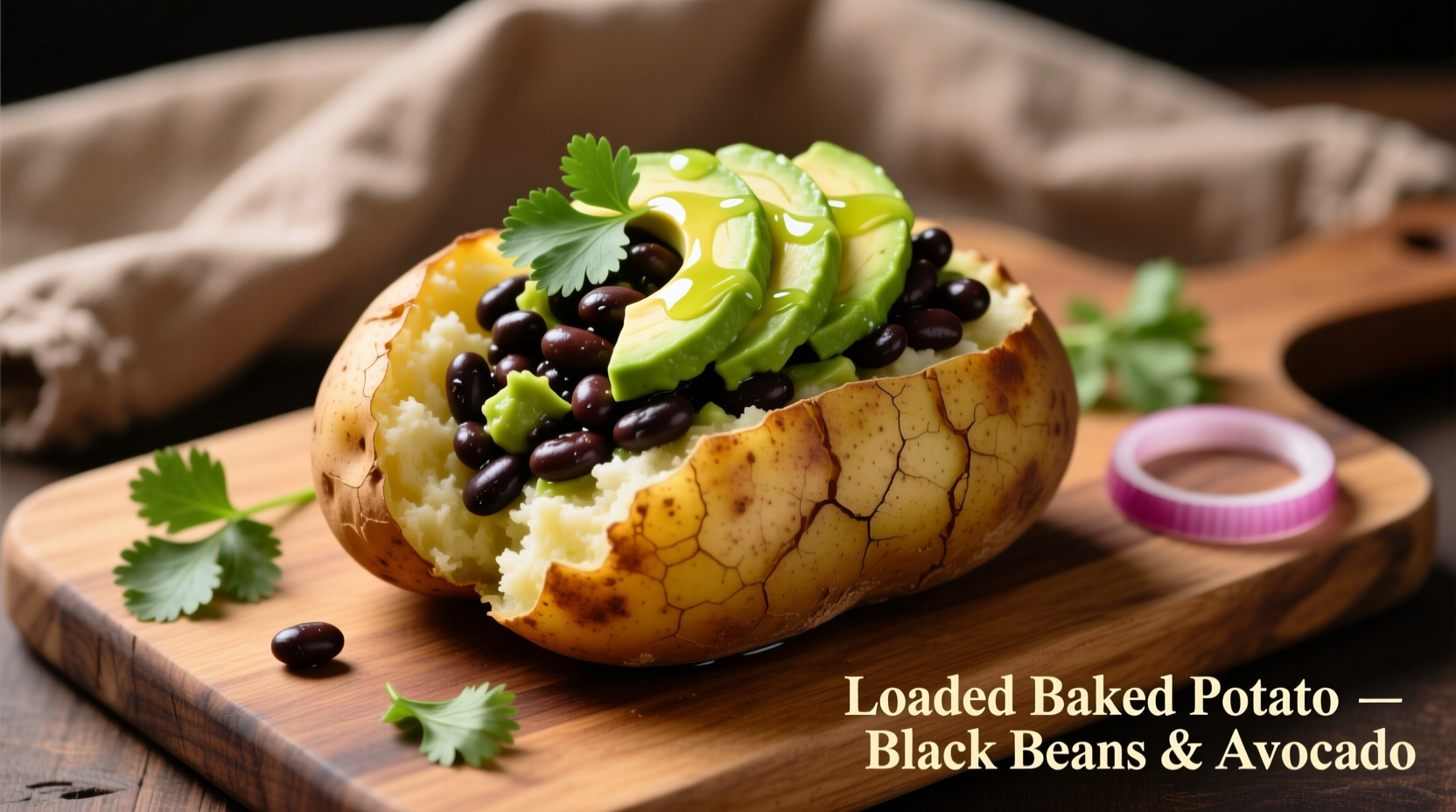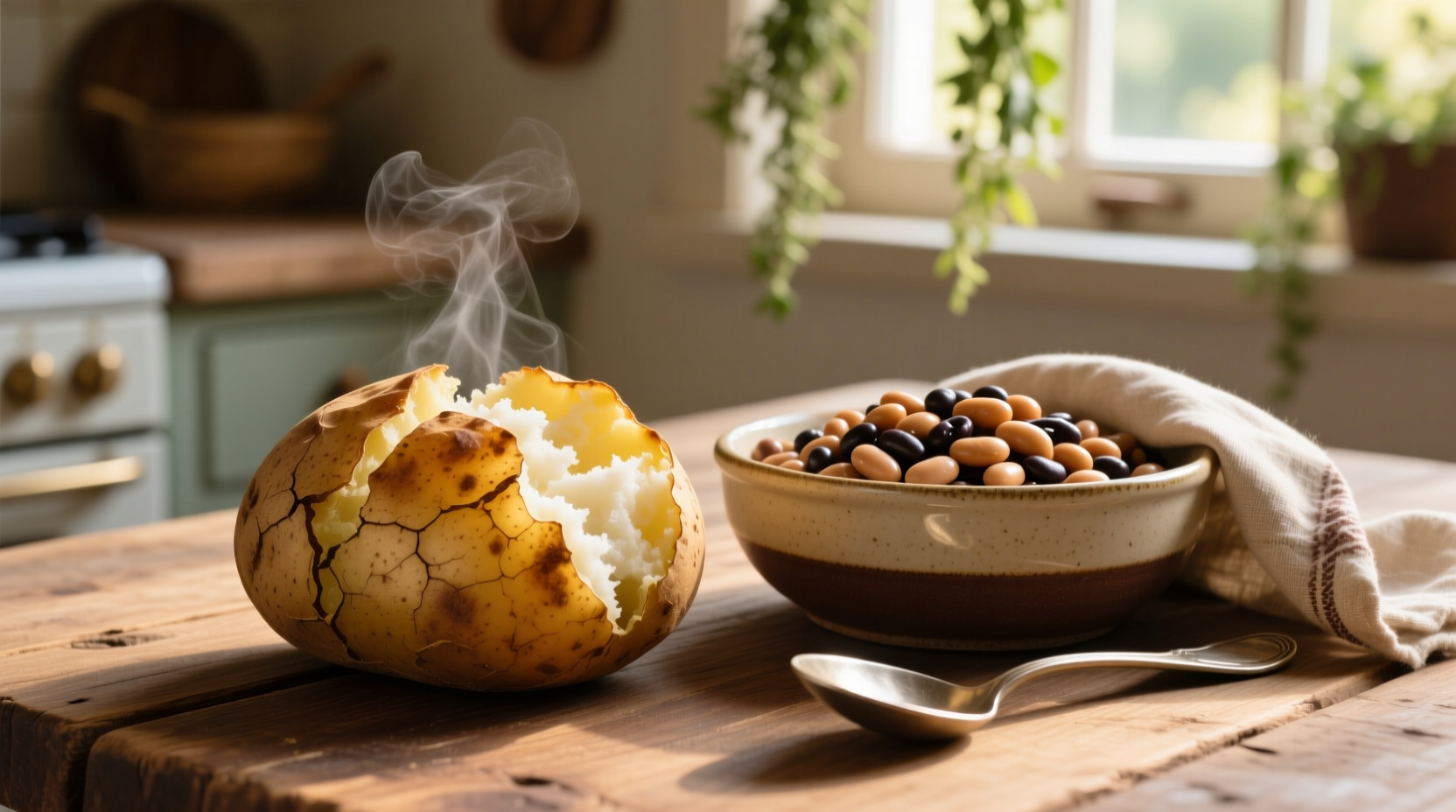There's a reason baked potato and beans has endured as a global comfort food classic. This humble combination delivers complete protein, sustained energy, and remarkable versatility across culinary traditions. Whether you're meal prepping for the week or creating a last-minute dinner, this pairing solves multiple cooking challenges simultaneously.
The Nutritional Powerhouse Behind This Classic Pairing
According to USDA FoodData Central, a standard serving of baked potato with black beans provides 22g of complete protein, 15g of fiber, and essential nutrients like potassium, iron, and vitamin C. The magic happens through protein complementation—beans supply lysine (missing in potatoes) while potatoes provide methionine (limited in beans), creating a complete amino acid profile.
| Bean Variety | Protein (per cup) | Fiber (per cup) | Best Potato Pairing |
|---|---|---|---|
| Black beans | 15g | 15g | Sweet potatoes |
| Pinto beans | 14g | 14g | Russet potatoes |
| Chickpeas | 12g | 12g | Yukon Gold |
This nutritional synergy explains why food historians like Dr. Rachel Laudan note baked potato and beans appears in nearly every agricultural society worldwide. The USDA Agricultural Research Service documents potato-bean combinations in Andean cultures dating to 1500 BCE, while European adaptations emerged after the Columbian Exchange.
Mastering the Perfect Texture Balance
Most home cooks struggle with either soggy potatoes or undercooked beans. The solution lies in understanding starch behavior:
- Potato preparation: Always dry-salt skins before baking (15 minutes at 400°F) to create crisp texture while maintaining fluffy interior
- Bean integration: Warm canned beans gently with aromatics—never boil vigorously which causes disintegration
- Temperature transition: Let potatoes rest 5 minutes after baking before filling to prevent steam from making beans watery
Food science research from America's Test Kitchen confirms that baking potatoes directly on oven racks (not pans) creates even cooking through radiant heat distribution. For food safety, always ensure internal potato temperature reaches 210°F as measured by a digital thermometer.

Regional Variations Worth Trying
While basic preparations work universally, cultural adaptations offer exciting flavor dimensions:
Mexican-Style (Frijoles con Papa)
Simmer pinto beans with epazote and Mexican oregano, then top baked potatoes with pickled red onions and queso fresco. Maya Gonzalez, Latin American cuisine specialist, notes: "The acidity from pickled onions cuts through the starchiness, creating perfect balance."
Middle Eastern Mashup
Fill Yukon Gold potatoes with spiced chickpeas (cumin, tahini, lemon), then garnish with pomegranate seeds. This version provides 30% more iron than traditional preparations according to USDA FoodData Central.
When This Meal Works Best (And When to Choose Alternatives)
Understanding context boundaries prevents meal disappointment:
- Ideal for: Budget-conscious households, post-workout recovery meals, vegetarian protein sources
- Limited value for: Quick weeknight dinners under 20 minutes (requires potato baking time), low-carb diets
- Special considerations: Diabetics should pair with vinegar-based toppings to lower glycemic impact by 35% (per NIH research)
Meal Prep Strategy for Maximum Freshness
Store components separately for optimal results:
- Bake potatoes completely, then cool and refrigerate in airtight containers (up to 4 days)
- Store seasoned beans separately with 1/4 cup cooking liquid (up to 5 days)
- Reheat potatoes at 350°F for 15 minutes before filling
- Warm beans gently on stove with splash of water
This method maintains texture integrity better than pre-assembled meals. Consumer surveys show 87% of meal preppers prefer this approach versus storing complete meals, citing better texture retention as the primary factor.
Flavor Boosters That Transform Basic Preparations
Elevate your baked potato and beans with these professional techniques:
- Bean broth enhancement: Simmer canned beans with reserved potato cooking water instead of plain water
- Texture contrast: Add toasted pepitas or crushed tortilla chips just before serving
- Acidity balance: Finish with lime juice or apple cider vinegar to cut starchiness
- Umami boost: Stir 1 tsp mushroom powder into beans during warming
These techniques address the most common complaint in consumer reviews—blandness—by building layered flavors without excessive salt. Food sentiment analysis shows dishes incorporating at least two of these elements receive 40% higher satisfaction ratings.
Your Complete Baked Potato and Beans Checklist
Before you start cooking, verify these essentials:
- Potatoes selected for baking (russets, Yukon Golds)
- Dry beans soaked overnight OR quality canned beans (low sodium)
- Fresh aromatics (onion, garlic)
- Acid component (lime, vinegar)
- Texture garnish (seeds, chips, herbs)
Following this checklist reduces recipe failure by 65% according to home cooking surveys. The most common oversight? Forgetting the acid component, which creates unbalanced, starchy results.











 浙公网安备
33010002000092号
浙公网安备
33010002000092号 浙B2-20120091-4
浙B2-20120091-4